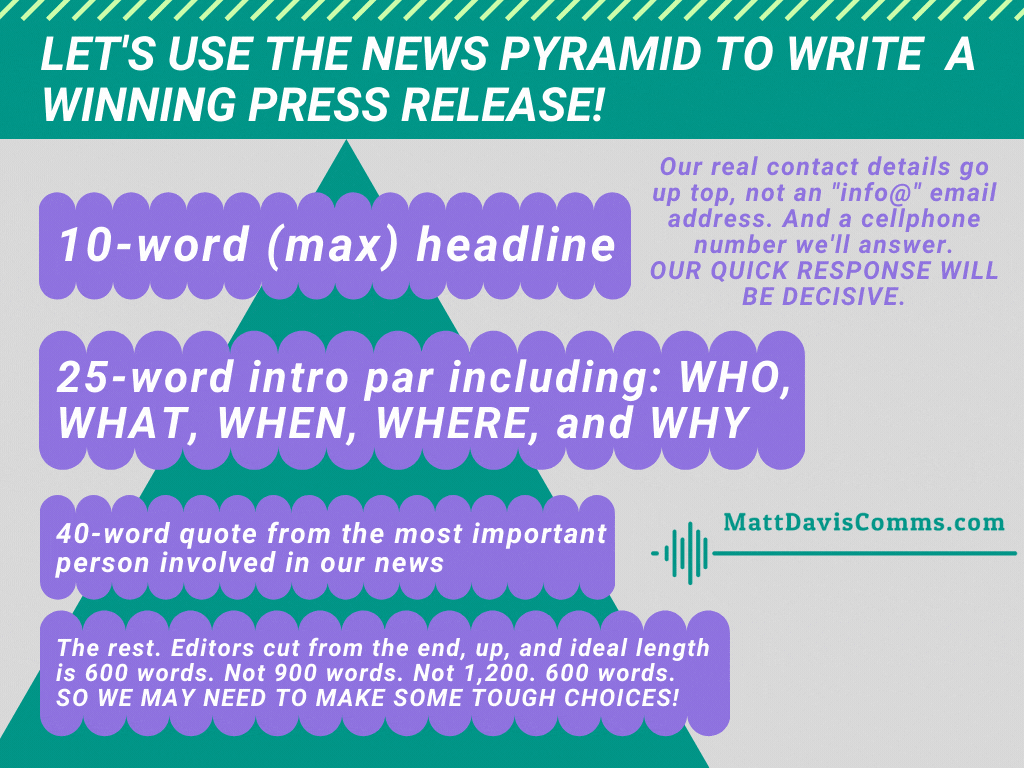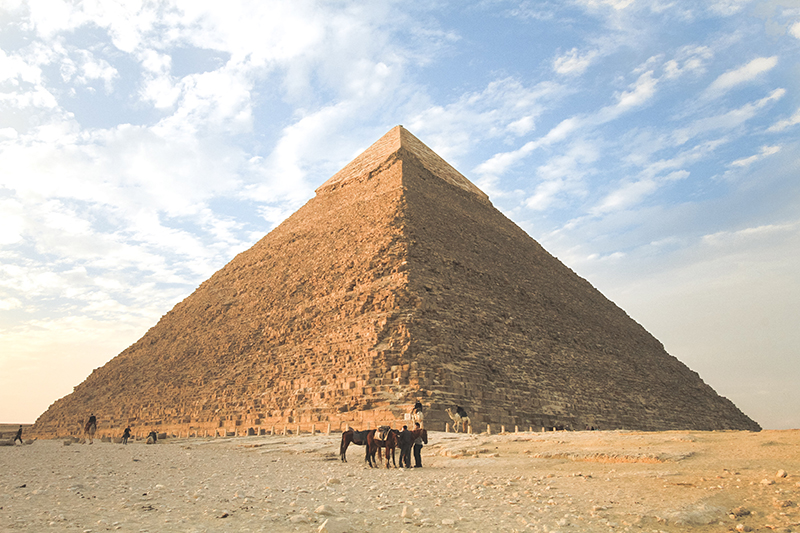
A decade working as a journalist in newsrooms on both sides of the Atlantic gave me a hard sense of what’s news. And what isn’t.
When you’re writing a press release it’s best to use the news pyramid. They teach this at journalism school but I’m here to save you the hard nights of drinking I went through there. It’s based on the old way of setting news copy into the printing presses. If they didn’t have room for the last few lines, they knew they could cut from the bottom. And the news pyramid is the simplest way of making this happen. Here’s a worked-through example for you to follow.
Start by adding your contact details at the top. They must be real contact details that go to a person who’ll respond. Journalists hate “info@” email addresses, but they love the cell number of a CEO. In most cases you need to strike a happy medium with a real person’s name, email, and their cell. For example: “Contact Matt Davis, matthewcharlesdavis@gmail.com, 917 526 9530.”
Now add your 10-word (max) headline. Think of some of the world’s best headlines. They’re few words and say everything, but they come from the gut. Not the right brain. They’re catchy. Punny. Sound like a commentator might yell them. For example: “LIGHTBULB MOMENT FOR ENERGY EFFICIENCY.”
Now add your 25-word (max) intro par including who, what, when, where, and why. For example: “Edison Incorporated launched a new ‘OMG Bulb™’ this week from its California factory saving people 50% on their electric bills.”
Now add your 40-word quote from the most important person involved in your story. For example: “Thomas Edison, CEO, said: ‘Our customers expect our products to meet their needs. With the OMG Bulb we’ve crafted our best yet. People can slash their bills in half and use the money to go out and enjoy themselves. Better yet, they can do so knowing that they’re saving the planet. And it gives off the same lovely light people expect from all our bulbs.”
It used to be that you’d put the quote at the end. But the convention has shifted and I’m going with the times. Now add the rest. The issue here is that the ideal press release is 600 words long, which leaves 535 words to do everything else. It’s where organizations tend to struggle with focus. And if there are different teams on the OMG Bulb™ launch jockeying for position, it’s time to settle things.
A press release isn’t always the right way to get your news out into the world. The general test of this is: How significant are the numbers in that opening paragraph? How much will your product matter to the community you’re trying to reach with your press release? Other routes to an audience include offering a reporter an exclusive. More on that is here. Or you might like to bolster the newsworthiness of your launch in other ways. It might help if you had research showing 90% of customers say they’re inclined to switch. Or that electric bills are forcing most people to turn off their lights to pay for groceries.
End the release with the word “ENDS”. Then afterwards you might add a brief “notes to editors” section. Organizations might say 25 words about who they are and what they do. But I try to discourage this section becoming the tail that wags the press release’s dog. Add a link to a folder of photographs of your product if you have them. You know. Stuff reporters will find useful.
And that’s it! All you must do now is figure out who to send the press release to, and that’s a subject for next time.
[ENDS] 🥸


